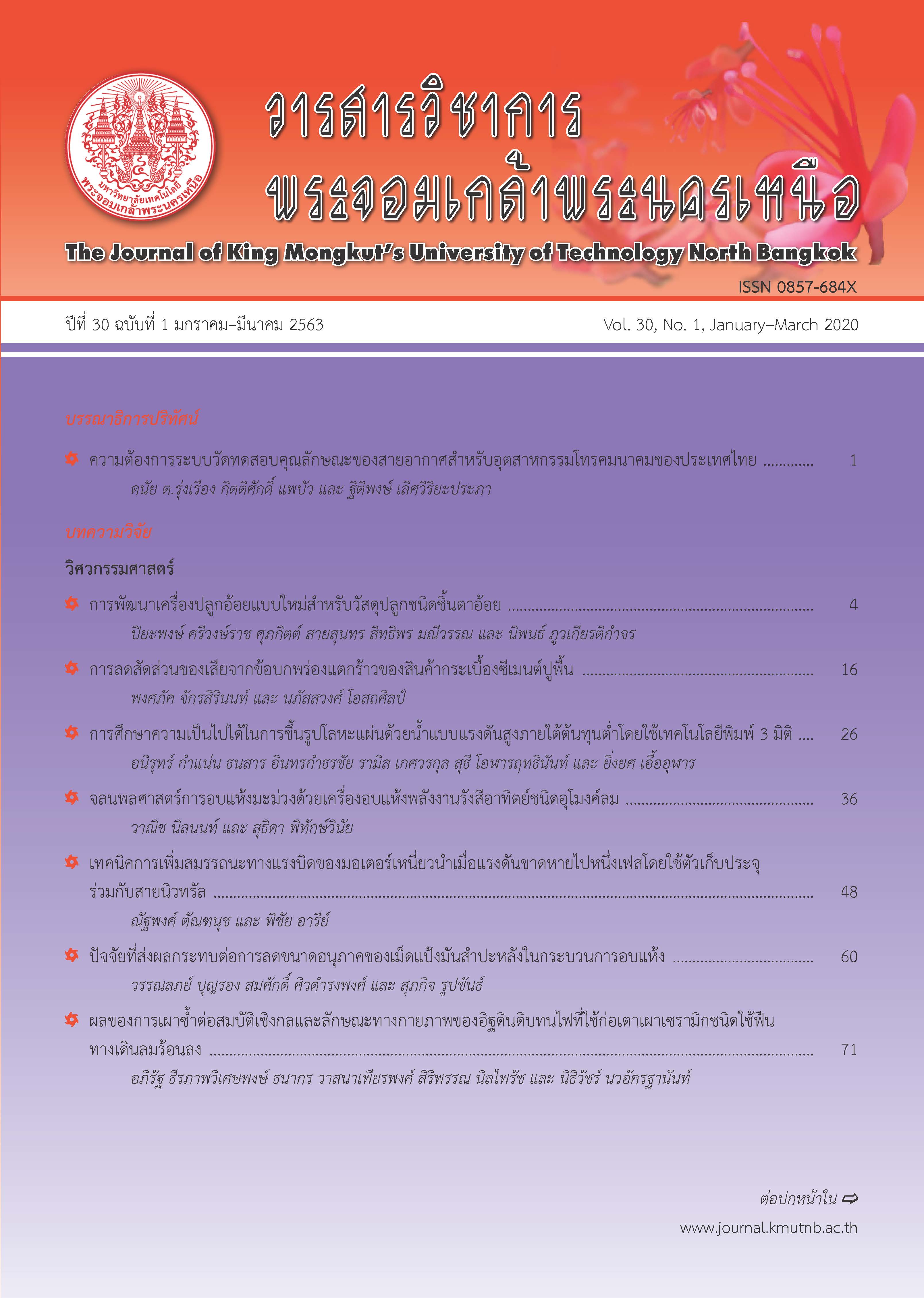Investigation of Low Cost in High Pressure Sheet Hydroforming with 3D Printing Technology
Main Article Content
Abstract
Sheet hydroforming process is required expensive and high-quality dies and equipment to produce parts. It makes a high mixed low-volume production become very costly. Therefore, this research is aimed to propose and investigate the possibility to produce a low-cost hydroforming by using a 3D printing technology with PLA filament to manufacture the die insert and a household water pressure pump modeled Bosch AQT 33-11 to generate the forming pressure. This investigation was divided into forming of 2 types of the hydroformed parts, namely 1) a simple dome configuration and 2) an embossing part by using SUS 304 sheet with the thickness of 0.6 and 0.4 mm, respectively. The experiments were performed with a constant pressure of 80 bars (the max pressure of the pump) and the clamping force of 30 tons. The simple dome and embossing parts were successfully formed without any crack and wrinkle. The die inserts after used are still in the working conditions without any damage. This technique was compared with the traditional stamping process in 3 criteria; production time, product quality and cost. The results show the 3D-printing technology takes more production time than that of the stamping process. However, for the part quality in term of a surface quality and thickness distributions, the 3D-printing could provide much better quality. The overall cost to produce the low volume product, in this study is lower than 3,651 parts, the 3D-printing is cheaper. Therefore, the proposed concept of employing 3D-printing and a commercial water pressure pump would be alternative to replace the conventional stamping process in the future.
Article Details
The articles published are the opinion of the author only. The author is responsible for any legal consequences. That may arise from that article.
References
[2] D. Schmoeckel, C. Hielscher, R. Huber, and M. Geiger, “Metal forming of tubes and sheets with liquid and other flexible media,” CIRP Annals, vol. 48, no. 2, pp. 497–513, 1999.
[3] M. Koc, Hydroforming for Advanced Manufacturing, England, Cambridge: Woodhead Publishing Limited, 2008.
[4] S. H. Zhang, L. H. Lang, D. C. Kang, J. Danckert, and K. B. Nielsen, “Hydromechanical deepdrawing of aluminum parabolic workpiecesexperiments and numerical simulation,” International journal of Machine Tools and Manufacture, vol. 40, no. 10, pp. 1479–1492, 2000.
[5] Simplify3D. (2018). Filament Properties Table. Simplify3D, USA. [Online]. Available: http://www.simplify3d.com/support/materials-guide/properties-table/
[6] T. Yao, Z. Deng, K. Zhang, and S. LI, “A method to predict the ultimate tensile strength of 3D printing polylactic acid (PLA) materials with different printing orientations,” Composites Part B: Engineering, vol. 163, pp. 393–402, 2019.
[7] A. Josifovic, J. Corney, and B. Davies, “Modeling variable speed drive for positive displacement pump,” presented at the 2014 IEEE/ASME International Conference on Advance Intelligent Mechatronic, Besacon, France, July 8–11, 2014.
[8] LS-DYNA Theoretical Manual, Livermore Software Technology Corporation, California, 2006.

